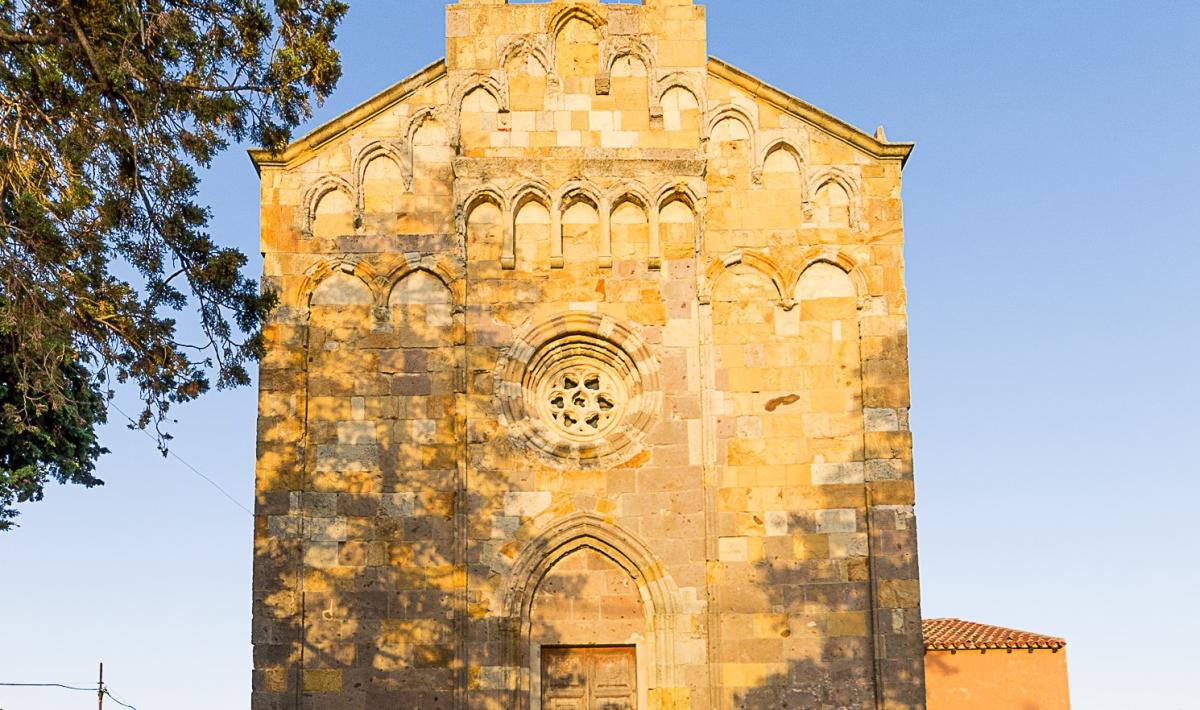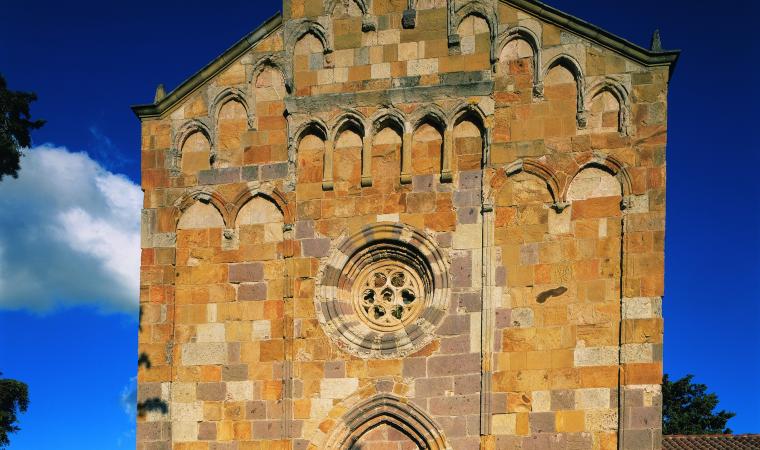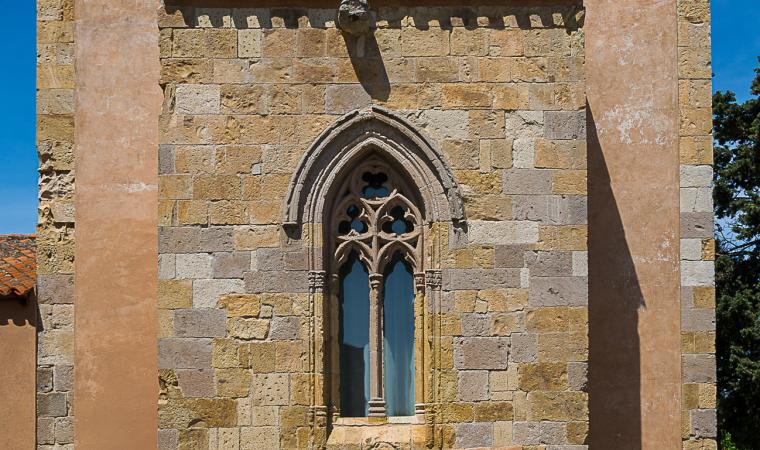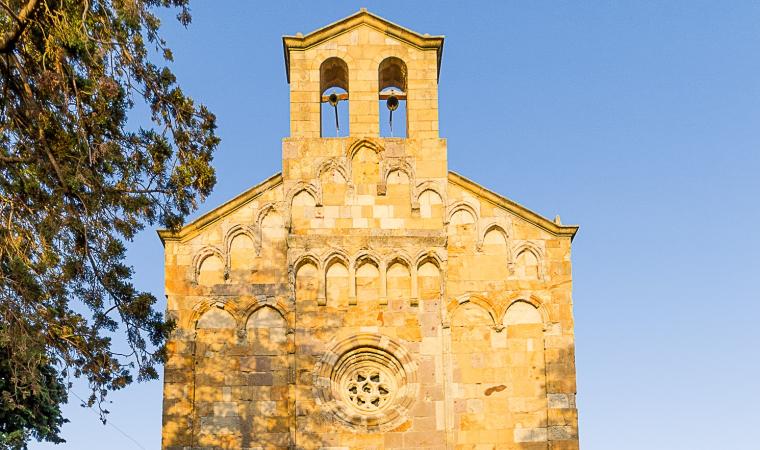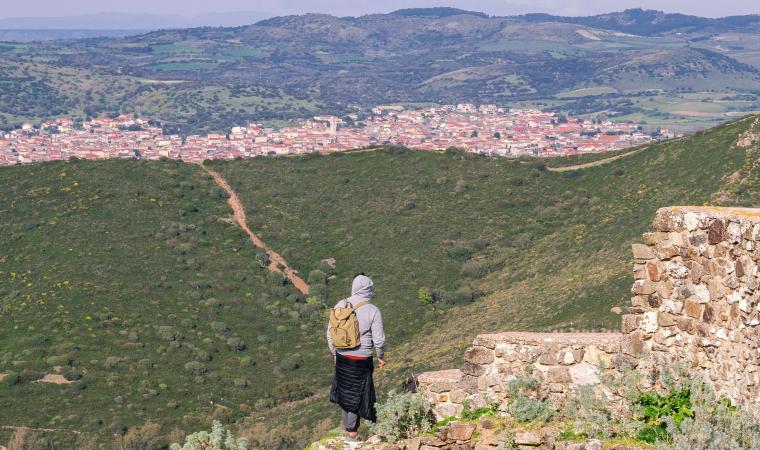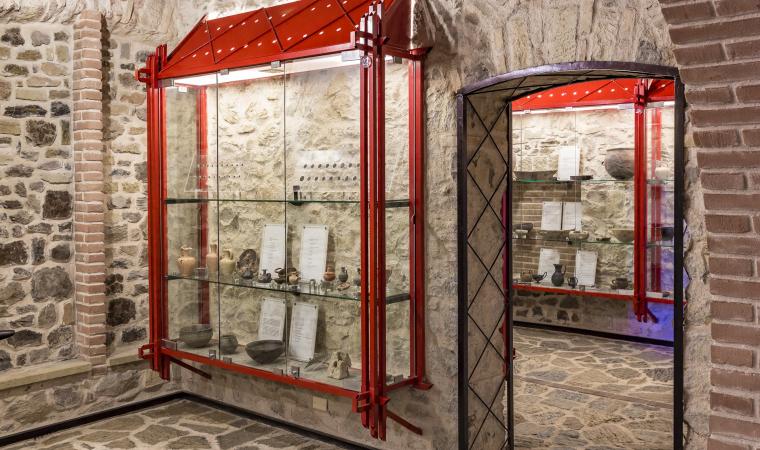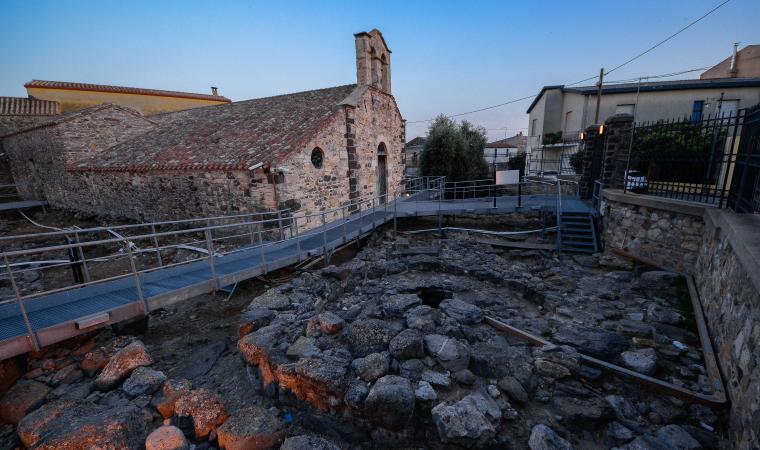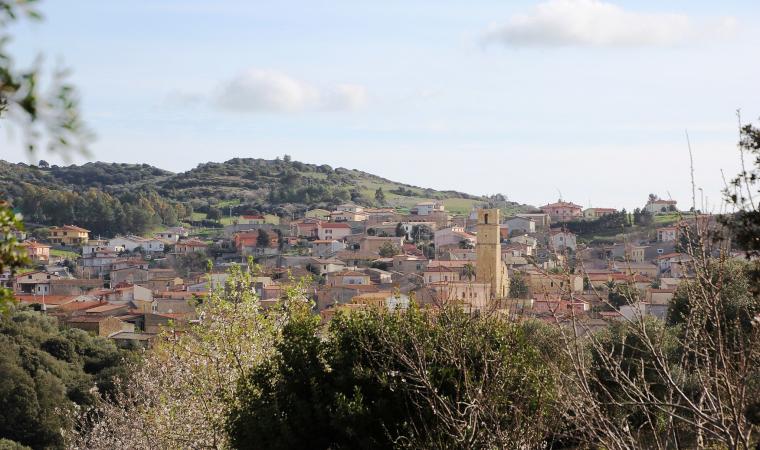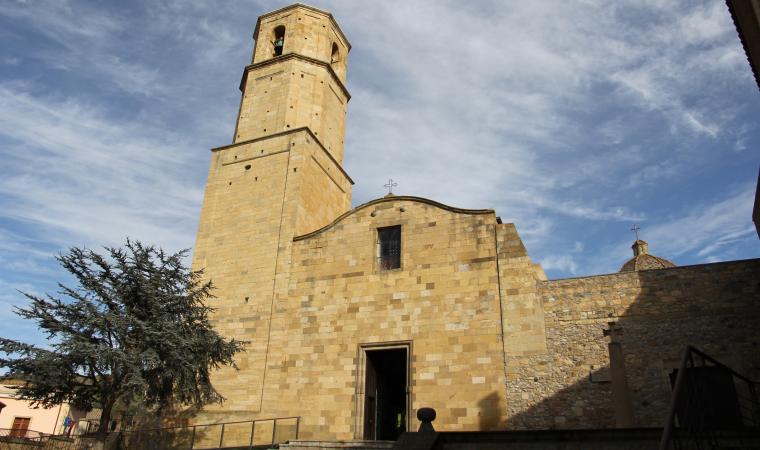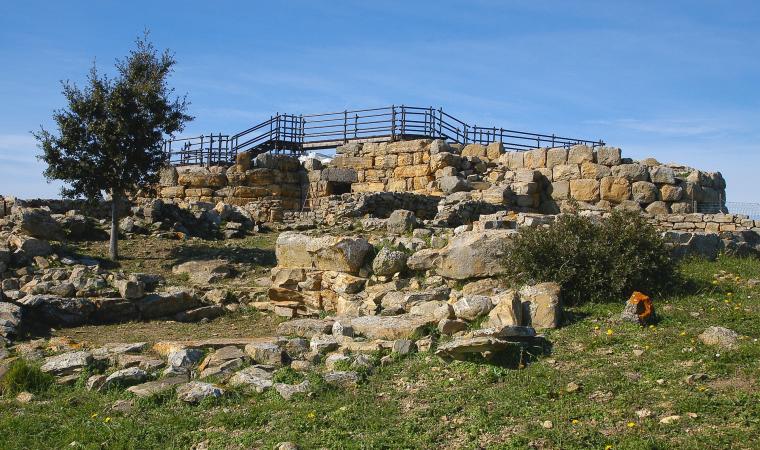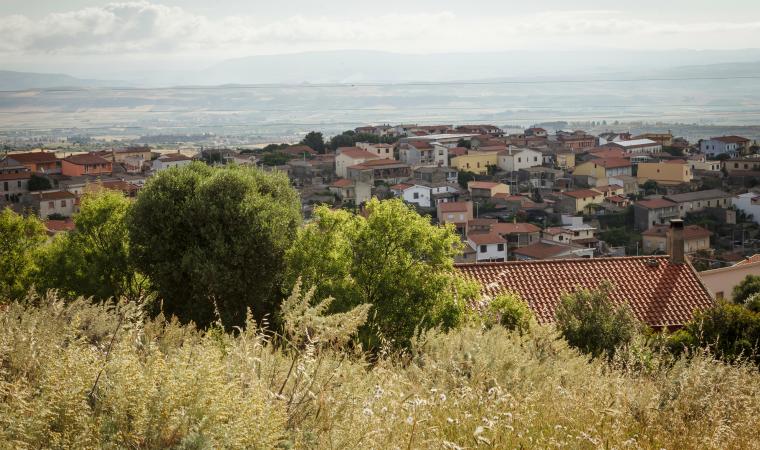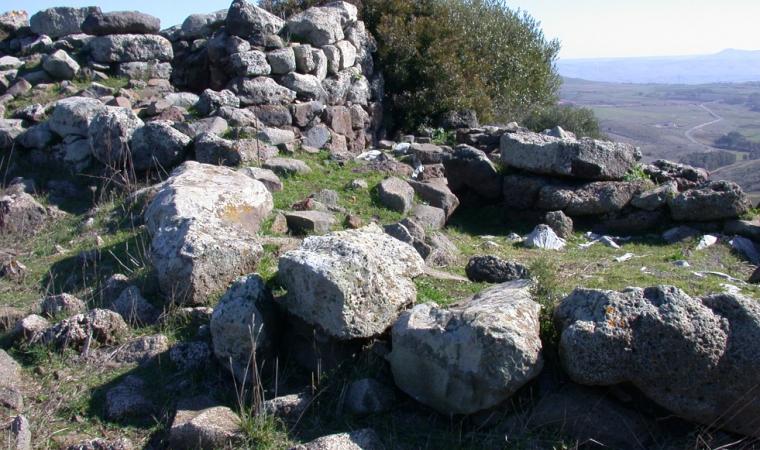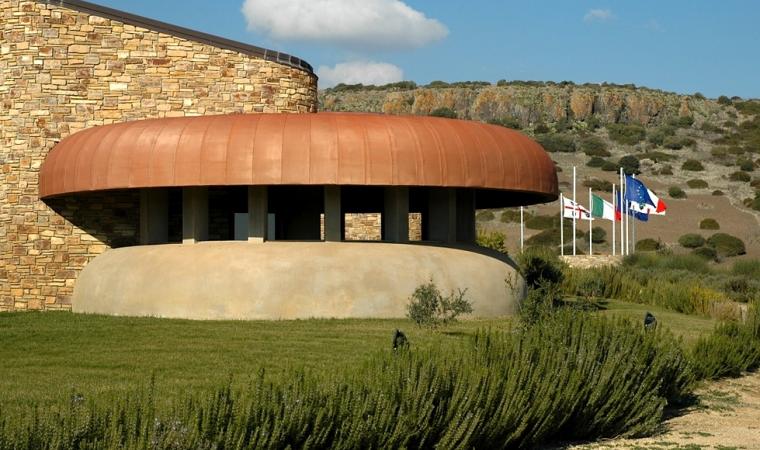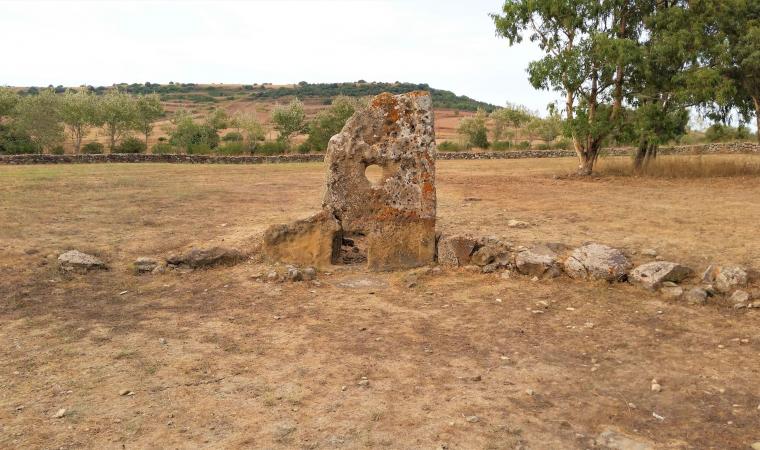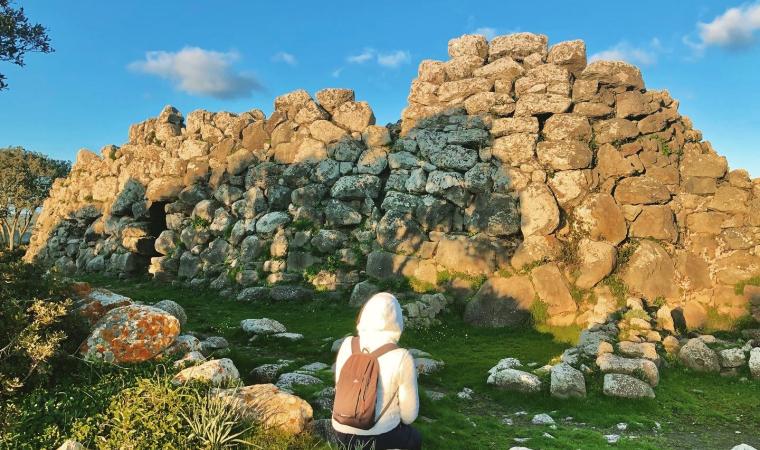A rare and valuable example of religious architecture that ‘combines’ two styles, Romanesque and Gothic, evidence of a crucial phase of artistic and cultural transition. The church of San Gregorio stands in the ‘upper’ part of Sardara, right in the historic centre and not far from the area of the Sanctuary of Sant’Anastasia, considered sacred since the Nuragic age. There are no documents attesting to its construction and the first documents that mention it date back to 1341, although it is assumed that it was founded by the Benedictine fathers in the first quarter of the 14th century. It was probably built by local workers, who were determined to go beyond the traditional Sardinian Romanesque style by inserting elements of the ‘new’ Italian Gothic taste.
The church dedicated to San Gregorio stands in the centre of the square of the same name, featuring cobblestone pavement. Coexistence between the two architectural styles is already evident in the façade, where, alongside the division into bands, punctuated by pilasters, and the Pisan-inspired false loggia, there is a pointed arch above an architrave and a rose window, both typically Gothic. You can also admire a series of small arches that follow the outline of the roof and, on the top, a bell gable with two openings. On the north side a second portal opens up, with a pointed curved arch. The interior has a single nave, with a trussed ceiling, at the end of which there is an apse, which has an unusual feature: it has an internal semicircular layout, while externally it is quadrangular in shape. It is also embellished with an elegant Gothic double lancet window.
Among the furnishings, you will see a wooden statue depicting the Pope, Saint Gregory, in clothes decorated with gold leaf, dating back to the 17th and 18th centuries, created by artists of the Neapolitan school. The simulacrum is carried in a procession during a celebration dedicated to the saint, linked to the wheat festival, which takes place every first weekend in September. It is one of the many events in a lively village where the Touring Club’s Bandiera Arancione (Orange Flag) has been flying for years. As well as the Sanctuary of Sant'Anastasia, where, along with two sacred wells and the remains of a Nuragic village, there are also traces of the Byzantine period under the adjacent 15th-century church, Sardara is also famous for its connection with water and with the Middle Ages. In the locality of Santa Maria Aquas the Romans took advantage of the thermal springs, the Aquae Neapolitanae, which are still active today. To the south-west, the town is watched over by the ruins of the Castle of Monreale, a ‘strategic’ border fortress between the Judicates of Cagliari and Arborea and a witness to the clashes between the Arboreans and the Aragonese in the 14th century.

